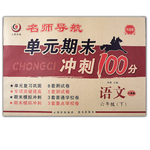题目内容
_____ running, learning English needs will.
A. As with B. As to C. As for D. As if
A
解析:这一题考这四个短语的意思。as to 和as for 都是介词短语,表示“至于,对于”,as if 引导状语从句,表示“似乎,好像”,as with 其实是 “as it is the same with” 的省略,表示“跟……一样”。

 名师导航单元期末冲刺100分系列答案
名师导航单元期末冲刺100分系列答案 名校名卷单元同步训练测试题系列答案
名校名卷单元同步训练测试题系列答案Here are some of the world’s most impressive subways
| The Tokyo Metro and Toei Lines | Features: The Tokyo Metro and Toei lines that compose Tokyo’s massive(庞大的)subway system carry almost 8 million people each day, making it the busiest system in the world. The system is famous for its oshiya— literally, “pusher”— who pushes passengers into crowded subway cars so the doors can close. And you think your commute (上下班路程) is hell. |
| The Moscow Metro | Features: The Moscow Metro has some of the most beautiful stations in the world. The best of them were built during the Stalinist era and feature chandeliers(枝形吊灯), marble moldings and elaborate murals(精美的壁画). With more than 7 million riders a day, keeping all that marble clean has got to be a burden. |
| The Hong Kong MTR | Features: The Hong Kong MTR has the distinction of being one of the few subway systems in the world that actually turns a profit. It’s privately owned and uses real estate development along its tracks to increase income and ridership. It also introduced “Octopus cards” that allow people to not only pay their fares electronically, but buy stuff at convenience stores, supermarkets, restaurants and even parking meters. It’s estimated that 95 % of all adults in Hong Kong own an Octopus card. |
| Shanghai Metro | Features: Shanghai is the third city in China to build a metro system, and it has become the country’s largest in the 12 years since it opened.Shanghai Metro has 142 miles of track and plans to add another 180 miles within five years. By that .point, it would be three times larger than Chicago “L”. The system carries about 2.18 million people a day. |
| The London Metro | Features: Londoners call their subway the Underground, even though 55 percent of it lies above ground. No matter when you’ve got the oldest mass-transit system in the world, you can call it anything you like.Trains started in1863 and they’ve been running ever since. Some 3 million people ride each day, every one of them remembering to “Mind the gap”. |
| A.The Tokyo Metro and Toei Lines | B.The Moscow Metro |
| C.The London Metro | D.The Hong Kong MTR |
| A.The Tokyo Metro and Toei Lines |
| B.The Moscow Metro |
| C.The London Metro |
| D.The Hong Kong MTR |
| A.carries the most people each day |
| B.is the world’s largest |
| C.may be larger than the Chicago “L” in the future |
| D.is the busiest in the world |
| A.It is not owned by state. |
| B.It has become the country’s largest subway since it opened. |
| C.It carries the most people every day. |
| D.It is the busiest system in the world. |
Here are some of the world’s most impressive subways
|
The Tokyo Metro and Toei Lines |
Features: The Tokyo Metro and Toei lines that compose Tokyo’s massive(庞大的)subway system carry almost 8 million people each day, making it the busiest system in the world. The system is famous for its oshiya— literally, “pusher”— who pushes passengers into crowded subway cars so the doors can close. And you think your commute (上下班路程) is hell. |
|
The Moscow Metro |
Features: The Moscow Metro has some of the most beautiful stations in the world. The best of them were built during the Stalinist era and feature chandeliers(枝形吊灯), marble moldings and elaborate murals(精美的壁画). With more than 7 million riders a day, keeping all that marble clean has got to be a burden. |
|
The Hong Kong MTR |
Features: The Hong Kong MTR has the distinction of being one of the few subway systems in the world that actually turns a profit. It’s privately owned and uses real estate development along its tracks to increase income and ridership. It also introduced “Octopus cards” that allow people to not only pay their fares electronically, but buy stuff at convenience stores, supermarkets, restaurants and even parking meters. It’s estimated that 95 % of all adults in Hong Kong own an Octopus card. |
|
Shanghai Metro |
Features: Shanghai is the third city in China to build a metro system, and it has become the country’s largest in the 12 years since it opened.Shanghai Metro has 142 miles of track and plans to add another 180 miles within five years. By that .point, it would be three times larger than Chicago “L”. The system carries about 2.18 million people a day. |
|
The London Metro |
Features: Londoners call their subway the Underground, even though 55 percent of it lies above ground. No matter when you’ve got the oldest mass-transit system in the world, you can call it anything you like.Trains started in1863 and they’ve been running ever since. Some 3 million people ride each day, every one of them remembering to “Mind the gap”. |
1.Which one can provide the riders some wonderful decorations at the stations?
|
A.The Tokyo Metro and Toei Lines |
B.The Moscow Metro |
|
C.The London Metro |
D.The Hong Kong MTR |
2.________ is done with the purpose of making money.
|
A.The Tokyo Metro and Toei Lines |
|
B.The Moscow Metro |
|
C.The London Metro |
|
D.The Hong Kong MTR |
3.We can learn from the passage that Shanghai Metro____________.
|
A.carries the most people each day |
|
B.is the world’s largest |
|
C.may be larger than the Chicago “L” in the future |
|
D.is the busiest in the world |
4.What do we know about the Hong Kong MTR?
|
A.It is not owned by state. |
|
B.It has become the country’s largest subway since it opened. |
|
C.It carries the most people every day. |
|
D.It is the busiest system in the world. |
认真阅读下列短文,并根据所读内容在文章后表格中的空格里填入最恰当的单词。注意:每空格只填一个单词。
Ticket tax fuels Indian cinema strike
Cinemas in Mumbai, Bollywood’s homeland are striking against high taxes on ticket sales.
Owners of Mumbai’s single-screen theatres will keep their shutters (百叶窗) down until Friday to protest about taxes, which they say are driving them out of business.
More than a third of single-screen cinemas in the state of Maharashtra have closed down in the last five years. According to the Cinema and Exhibitors Association of India, just 700 are still in operation. The association blames the closing down on Maharashtra’s high rate of entertainment tax. Its president, R V Vidhani, says that cinemas must pay a tax for every ticket sold, which is 45%, and this makes it hard to break even. It’s the highest of all states across India. The majority of the states in India pay zero entertainment tax. Mr Vidhani says his members had decided to go ahead with a one-week closure after getting no response from the state government on the matter.
It is not just a high tax rate contributing to the shrinking(收缩)number of traditional cinemas, however. Large costs and declining box office takings also make times tougher.
Mr Vidhani has run the New Excelsior Theatre in South Mumbai since 1974. Last week a screening of Bollywood movie Tanu Weds Manu sold just 71 tickets despite a capacity of more than 1,000. Whether it’s a full house or an empty screening, running costs are more or less the same. “Air conditioning, regular business — every expenditure (支出) is the same, but the income has stopped.”
The cricket (板球) World Cup is not helping matters, according to Mr Vidhani. “The World Cup is creating the biggest problem,” he says. “These people are crazy so far as the cricket is concerned. When India is playing, occupancy in the theatre is just 15%.”
Mumbai’s city centre is dotted with empty cinemas.
So after remaining empty for six years, the Novelty theatre is perhaps more fortunate than its neighbours: it is to be reborn as a four-screen multiplex cinema.
Over the last decade the number of multiplexes in India has risen sharply. Despite higher ticket prices, with more choice on offer and typically newer facilities they pose fierce competition to the traditional single-screen theatres.
“Competition from the multiplexes is really tough,” Mr Vidhani says. “Then there is competition from the movie window being narrow. Movies are being released much quicker on television than they used to be so people can pretty much watch movies for free at home.
“With rising incomes, everyone’s going out and buying DVD players or VCD players. Content is available for the asking whether it is official or pirated(盗版).”
Unless single-screen theatres can become special destinations in their own right, while also offering up-to-date facilities, Jehil Thakkar thinks the decline is a trend that will continue, especially as multiplex cinemas spread to smaller towns.
“They are large corporate chains,” he says. “They have the ability to spend money on branding and advertising, so to a large extent the small cinema guys are fighting a losing battle.”
Ticket tax fuels Indian cinema strike
|
The current (1) ▲ of cinema business in Mumbai |
● Many single-screen cinemas are (2) ▲ . |
|
The causes of the closing down of cinemas |
l Cinemas in Mumbai have to pay a tax (3) ▲ than any other places in India. l It costs a lot to (4) ▲ a cinema whether it’s a full house or an empty screening. l The occupancy is (5) ▲ by people’s enthusiasm for cricket. l Single-screen cinemas are (6) ▲ with competition from multiplex cinemas, which offer more choices and (7) ▲ facilities. l A quicker release of movies on television is to (8) ▲ . l People prefer to watch DVD or VCD rather than go to the cinema. |
|
The (9) ▲ of single-screen cinemas |
l The trend of decline will continue. l Single-screen cinemas are certain to (10) ▲ the battle. |